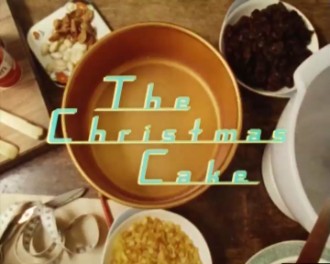
The Christmas Cake 1996
Distributed by First Run/Icarus Films, 32 Court St., 21st Floor, Brooklyn, NY 11201; 800-876-1710
Produced by Sally Browning with The Australian Film Commission
Directed by David Grusovin & Katey Grusovin
VHS, color, 27 min.
High School - Adult
Women's Studies, Anthropology, Psychology
Date Entered: 11/09/2018
Reviewed by Rebecca Graves, J. Otto Lottes Health Sciences Library,University of Missouri-ColumbiaKatey and David Grusovin's touching documentary about the entwined lives of their grandmother and grand-aunt opens with a panorama of the bowls and ingredients used to make the famed Christmas cakes. Using the cake as a center point, the documentary explores the lives of these two Australian women brought together by a marriage and kept together by need.
Outgoing and exuberant, Jessie met and married Tom Brereton. Together they raised five children and enjoyed a "very happy marriage." Though they had difficulties and disagreements, they helped and balanced each other. After Tom's father passed on, his younger sister, Molly, and his mother moved in with him and Jessie. While this made for a crowed home, it also gave Jessie an extra pair of hands to help with the children.
Molly, an introvert by nature, never married and continued to live with Jessie and Tom after their mother died. Both women were active in the Australian Labour Party with the household often hosting gatherings for party members. While Jessie contributed her labor to handing out flyers and such, Molly was the more politically active, campaigning aggressively for the candidates.
With the passing of Tom in 1984, Jessie and Molly remained together out of need and practicality. They would not have chosen each other as friends and had significant differences in their routines and temperament; however, they loved the same family and managed to live together for over fifty years.
The making of the Christmas cakes is woven throughout the documentary, symbolic of the tradition and family that bound the two women together. A wonderful look at history, family, and the lives of women, this film would be suitable for classes in history, sociology, anthropology, psychology, and women's studies, ages 14 and older.